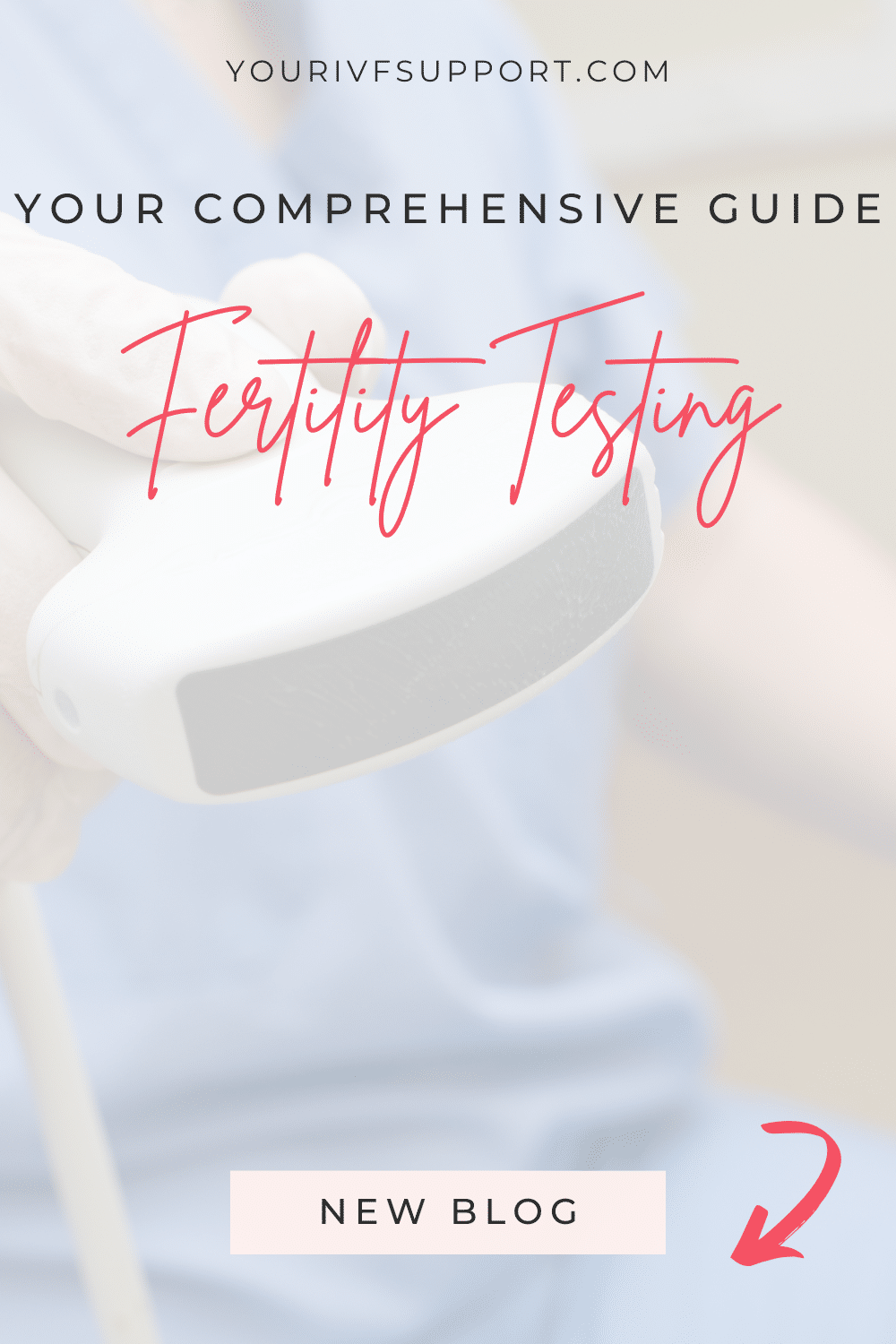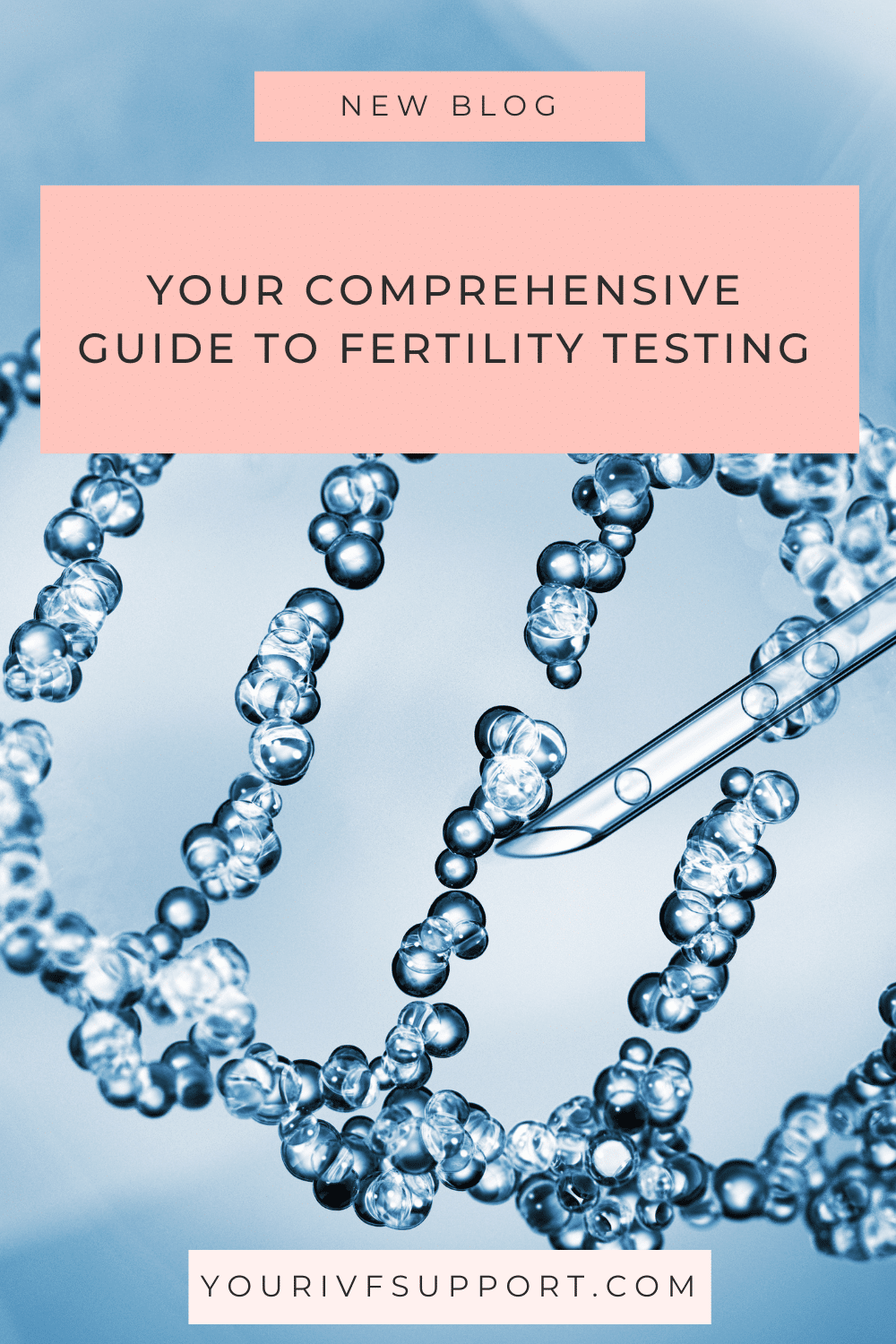The road to having a baby can sometimes be paved with unexpected hurdles. Fortunately, many scientific and medical advances are available to help identify the causes of fertility problems and offer solutions. In this guide, you'll find out more about the most important infertility tests.
Hormone checks
Hormone balance plays a central role in female fertility. An imbalance or atypical levels can indicate various fertility problems. Hormone testing is therefore often the first step in investigating infertility problems.
FSH (follicle stimulating hormone):
Function: FSH is responsible for starting the menstrual cycle and stimulating the ovaries to produce follicles. Each follicle contains an immature egg.
When to test: FSH is usually measured on the third day of your cycle. A high level may indicate reduced ovarian reserve, while a low level may indicate inadequate ovarian stimulation.
LH (luteinising hormone):
Function: LH is essential for the ovulation process. It triggers the maturation and release of an egg from the dominant follicle.
Time of test: LH is usually measured in the middle of the menstrual cycle, just before ovulation is expected. An LH test can help determine the exact time of ovulation, which is particularly useful if you are trying to conceive naturally.
Progesterone:
Function: After ovulation, the remaining follicle, now called the corpus luteum, produces progesterone to prepare the lining of the womb for the possible implantation of a fertilised egg.
When to test: Progesterone is usually measured about a week after expected ovulation to make sure it has happened. A low progesterone level at this time may indicate that ovulation has not occurred or that there is a problem with the corpus luteum.
Prolactin:
Function: Prolactin plays a role in postpartum milk production. However, high prolactin levels outside pregnancy can prevent ovulation.
Causes of elevation: Elevated prolactin levels can be caused by several factors, including medication, pituitary tumours or disorders, stress or even some foods.
When to test: Prolactin levels can be measured at any time during the menstrual cycle, but it is important that no breast contact or stimulation has occurred before the blood sample is taken, as this can temporarily increase prolactin levels.
A hormone check-up provides a comprehensive overview of a woman's menstrual cycle and fertility. It is important to remember that every body is unique and it is normal for hormone levels to vary from cycle to cycle.
A one-off abnormal reading does not necessarily mean there is a permanent problem. However, it is advisable to see a specialist if irregularities persist.

Ultrasound
Ultrasound is a valuable, non-invasive tool in reproductive medicine that provides a detailed view of the female anatomy and the ovulation cycle.
Baseline ultrasound:
Purpose: This scan is used to assess the current status of the menstrual cycle and ovaries at the beginning of the cycle.
What will be assessed. The doctor will look at the number of follicles on the ovary, which gives an idea of how many eggs are likely to mature in this cycle. The doctor will also look for cysts or other abnormalities that could affect your cycle.
When is it done? Usually between the 2nd and 5th day of your cycle, before you start any drug stimulation.
Follicular monitoring:
Aim: Regular ultrasound scans allow the doctor to monitor the development and maturation of the follicles.
What is assessed? In addition to the size and number of follicles, the thickness and quality of the endometrium is also monitored. This is important to determine the optimum time for ovulation and, if necessary, artificial insemination.
When is it done? Follicle monitoring takes place several times during the menstrual cycle, usually from day 8 or 10, depending on when the follicles start to grow.


Semen analysis
Although the focus is often on female fertility, it is important not to overlook male fertility. Sperm analysis is the key tool here.
Quantity: A critical factor in male fertility is sperm count. A healthy ejaculation should contain at least 15 million sperm per millilitre. Anything less could indicate potential infertility.
Mobility: The ability of sperm to move efficiently is critical. A sufficient number of sperm should be able to move in a straight line. A high percentage of immobile sperm may reduce the chances of fertilisation.
Shape: Morphology describes the appearance of the sperm. Sperm with an abnormal shape may have difficulty fertilising an egg. Particular attention is paid to the head, mid-section and tail of the sperm.
" A hormone check-up provides a comprehensive overview of a woman's menstrual cycle and fertility. It is important to remember that every body is unique and it is normal for hormone levels to vary from cycle to cycle."
Hysterosalpingography (HSG)
Hysterosalpingography is an imaging technique used to evaluate the internal structures of the female reproductive system.
The procedure: A contrast dye is injected into the uterus, which is then followed by x-rays through the fallopian tubes and uterus.
Purpose: The main purpose of the test is to check the patency of the fallopian tubes, which is essential for the transport of eggs and sperm. Blocked fallopian tubes are a common cause of infertility. The HSG also provides information about the shape and structure of the uterine cavity, which is important for egg implantation.
Genetic testing
Genetic testing can provide valuable information about whether chromosomal or genetic disorders may be the cause of recurrent miscarriage or infertility.
Karyotyping: This involves taking a blood sample and analysing the chromosomes under a microscope. Chromosomal abnormalities may be the cause of repeated miscarriages or certain developmental problems in the child.
Targeted genetic testing: If there is a family history of genetic disorders, targeted genetic testing can be done. This can help couples understand their child's risk of inheriting a specific genetic condition and inform decisions about fertility treatments or prenatal testing.



Laparoscopy
Laparoscopy is a surgical diagnostic procedure often referred to as "keyhole surgery".
Procedure: Laparoscopy involves making small incisions in the abdomen through which a camera and surgical instruments are passed.
Purpose: It allows doctors to look directly at the uterus, fallopian tubes, ovaries and other nearby structures. This is particularly useful for identifying conditions such as endometriosis, cysts, adhesions or other abnormalities that could affect fertility.
Therapeutic benefits: In addition to diagnosis, laparoscopy can also be used therapeutically. For example, if endometriosis lesions are found during the procedure, they can often be removed immediately.
Conclusion
Infertility can be caused by a variety of factors, many of which can be identified by modern medical tests and procedures. Couples who are having difficulty conceiving should consult a fertility specialist who can develop an individualised testing and treatment plan.
Note: This blog article provides general information and personal experience. It is always advisable to seek individual advice and professional support regarding your own desire to have children.



